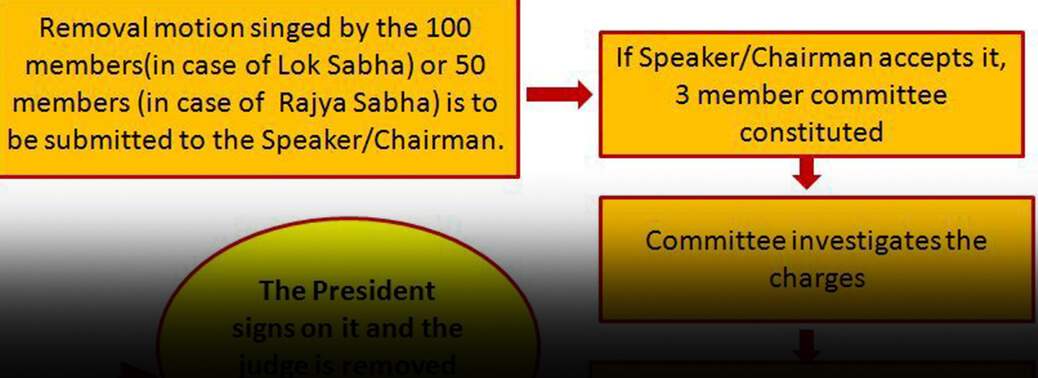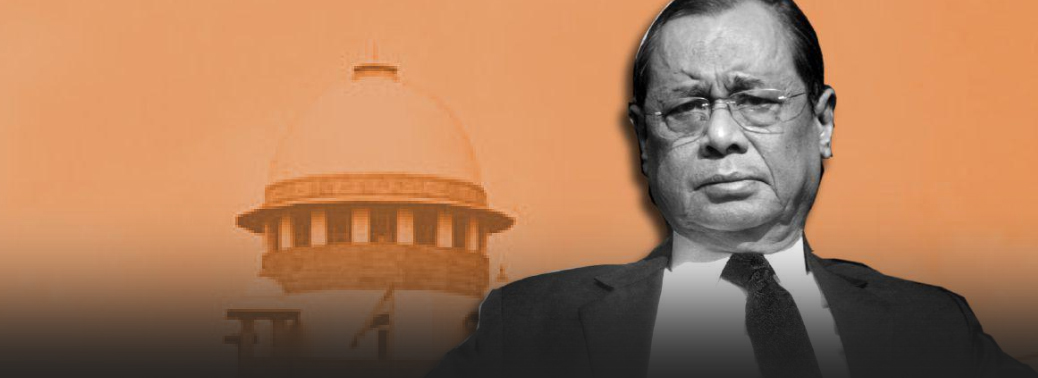Category: Appointment to various Constitutional posts, powers – GS2G
Removal of the Judge of a High Court
24, Jun 2019

Context:
- In•house panel found an Allahabad High Court judge, Justice S.N. Shukla, guilty of misconduct, Chief Justice of India Ranjan Gogoi has written to Prime Minister Narendra Modi to initiate a motion for his removal.
- A Judge of the High Court can be removed from office only for proven misbehaviour or incapacity and only in the same manner in which a Judge of the Supreme Court is removed. The President of India can remove a Judge of the High Court, from his office only if each house of the parliament passes a resolution by a two third majority of its members present and voting in each house requesting him to remove the judge.
Appointment of the Judges of High Courts:
- As per article 217, the chief Justice of the high court is appointed by the President in consultation with the Chief justice of India as well as the Governor of the state in question. A collegium system has evolved over the years in which a Collegium headed by the CJI makes recommendation to the government for appointment of judges.
Judicial Appointment Contraversy
11, May 2019

Why in News:
- Supreme Court Collegium, led by Chief Justice of India Ranjan Gogoi, recommended the names of two judges to the court and rejected the government’s disapproval of the elevation of two others.
Background:
- Collegium refused the government’s request to reconsider its April 12 recommendation to elevate Jharkhand High Court and Gauhati High Court Chief Justices Aniruddha Bose and
- S. Bopanna as Supreme Court judges.
- The Collegium said their names were recommended after all parameters were The Collegium said there was no reason to agree with the government as there was
- nothing adverse found in the two judges’ conduct, competence or integrity. Now, the government is bound to appoint Justices Bose and Bopanna to the court.
What is the Collegium System?
- The Collegium System is a system under which appointments/elevation of judges/lawyers to Supreme Court and transfers of judges of High Courts and Apex Court are decided by a forum of the Chief Justice of India and the four senior-most judges of the Supreme Court.’ There is no mention of the Collegium either in the original Constitution of India or in successive
- The recommendations of the Collegium are binding on the Central Government; if the Collegium sends the names of the judges/lawyers to the government for the second
How Collegium System Works?
- The Collegium sends the recommendations of the names of lawyers or judges to the Central Government. Similarly, the Central Government also sends some of its proposed names to the Collegium. The Central Government does the fact checking and investigate the names and resends the file to the Collegium.
- Collegium considers the names or suggestions made by the Central Government and resends the file to the government for final approval. If the Collegium resends the same name again then the government has to give its assent to the names. But time limit is not fixed to reply. This is the reason that appointment of judges takes a long time.






